By Roger Grody
For most people, the admiration of stained glass is reserved for worship services, tours of European cathedrals or Tiffany lamps, but the versatility of the centuries-old art is being rediscovered by craftsmen around the world. Contemporary stained glass artisans are designing windows and wall sculptures for trendsetting hotels, corporate offices and sleek modern homes, giving the ancient art an entirely new image.
The medium’s transition from religious symbolism to a more secular, modern expression of art was pioneered by Frank Lloyd Wright, whose Prairie-style residences were enhanced with extraordinary leaded glass windows, doors and ceilings referred to as “light screens.” Julie L. Sloan, whose book Light Screens: The Leaded Glass of Frank Lloyd Wright examines several decades of Wright’s prolific glass design, confirms the architect’s aesthetics were a clear departure from those of contemporaries Louis Comfort Tiffany and John La Farge. “His clear glass in abstract patterns was nothing short of revolutionary,” reports Sloan, who notes that, unlike the nearly opaque stained glass in preceding centuries, Wright’s light screens were designed to integrate indoor spaces with the natural environment.
Although it was founded at the end of the 19th century, Los Angeles’ Judson Studios does not treat stained glass as simply architectural salvage, but as a dynamic contemporary medium. Its artisans apply avant-garde designs and innovative techniques to a wide range of projects that transcend religious institutions. David Judson, fifth-generation company president and author of Judson: Innovation in Stained Glass, reports, “Glass has maintained its relevance over time because it reflects contemporary society. What remains unchanged is the pure, visceral impact of color and light through stained glass.”
Signature projects of Judson Studios include the Natural History Museum in L.A. and the iconic Air Force Academy Chapel in Colorado. The firm’s pioneering efforts in fused glass — this technique creates the effect of leaded glass without the need for soldered metal dividers — led to Judson’s creation of the world’s largest fused glass window in 2018. The formidable panel, encompassing more than 3,400 square feet of art glass, was installed in the Church of the Resurrection in Leawood, Kansas.
“The design world is increasingly attracted to the medium for its vibrant color and connection to tradition, the idea of taking something old and making it new,” says Judson of the introduction of glasswork into contemporary settings. He adds, “The beauty of glass is that it can withstand the environment while dealing with light in a different way … that interpretation of light can have a great impact.”
Adamm’s Stained Glass & Art Gallery in Santa Monica, California, exhibits the works of prominent stained glass artisans, and in addition to churches and synagogues, owner Adamm Gritlefeld installs his own glasswork in trendy hotels and celebrity-owned residences. His restoration projects have included Frank Lloyd Wright residences and the former Tower Theatre in downtown L.A., recently reimagined as a particularly showy Apple Store.
While bold palettes frequently draw consumers to this medium, Gritlefeld reports that intriguing designs composed of colorless diamond-shaped glass with varying textures and beveling account for many of his current architectural commissions. “People are inspired by what they see in museums or traveling and seek to reproduce it,” explains the glass specialist, who adheres to traditional fabrication techniques. “A recent client admired some windows in Italy and wanted the same look in his Malibu villa,” reports Gritlefeld of a typical request.
The work of Brooklyn-based artist Tom Fruin is in demand by architects, galleries and private collectors around the world. Rather than glass and lead, Fruin works with scavenged, reclaimed pieces of plexiglass and steel. The artist, who once created quilts from materials most people would consider litter, explains, “Those items showed patterns of human behavior and informed the design of my glass structures.” The artist’s glass houses, public art installations injecting explosions of color in urban spaces from Copenhagen to Orlando, transform discarded materials into enriching art.
His compelling series of water towers — vibrantly colored versions of the nondescript rooftop water towers scattered across the skyline of his adopted hometown of Brooklyn — are unexpected eye candy for motorists entering the borough on the historic Brooklyn Bridge. “Water towers, part of an overlooked infrastructure, are emblematic of all of New York, and mine change people’s perceptions about their surroundings,” says Fruin.
The illuminated, solar-powered structures have become iconic symbols of Brooklyn’s rebirth, and the artist has also created a full-size sculpture of the Statue of Liberty’s flame, constructed of broken windows from abandoned factories.
Nadine Keegan, a prominent stained glass practitioner in Melbourne, Australia, is a self-taught artisan who fell in love with the medium after viewing the famous glass murals at Cosmovitral in Toluca, Mexico. “Broadly, I draw inspiration from the Romantic appreciation of the ephemerality of light and life as well as from textiles, architecture, history, and art,” reports Keegan, who cites Australian modernism, Japanese woodblock prints and Frank Lloyd Wright as specific influences.
“Contemporary stained glass fulfills many architectural roles. It can be a subtle accompaniment or bold centerpiece,” states Keegan, who creates both objets d’art and architectural windows. “The legacy of the craft is extremely important to me, and while I honor this in the content of my art, I don’t use pure lead, which is the main separation between my work and traditional leadlights,” explains Keegan. “I’ve developed ways of combining the use of zinc, Tiffany-style metalwork and fused glass to expand beyond the limitations of the past,” adds the artist, who reports growing interest in stained glass by both residential and commercial sectors in Australia.
Lesley Green, owner of Arizona-based Bespoke Glass, reports, “When I started the company in Brooklyn, everyone I knew lived in apartments, so my initial idea was to make sets of small pieces that could be arranged in various ways depending on the space.” She still sells that line, which she calls “Elements,” but has moved on to larger installations in restaurants and retail establishments around the world. Green tends to employ a relatively tight palette of about 30 colors, and the copper foil method she practices (a technique often attributed to Tiffany) results in a distinct, uniform solder line.
Windows from Bespoke Glass generally reflect geometric patterns devoid of imagery, resulting in clean, modern aesthetics. Although her work is vaguely evocative of Wright’s, Green is more apt to draw her inspiration from textile design, murals and street art. With much of her work hanging from ceilings or on walls, the artist comments, “There are many more ways to bring the light and color of stained glass into your home beyond the commitment of an installed window panel.”


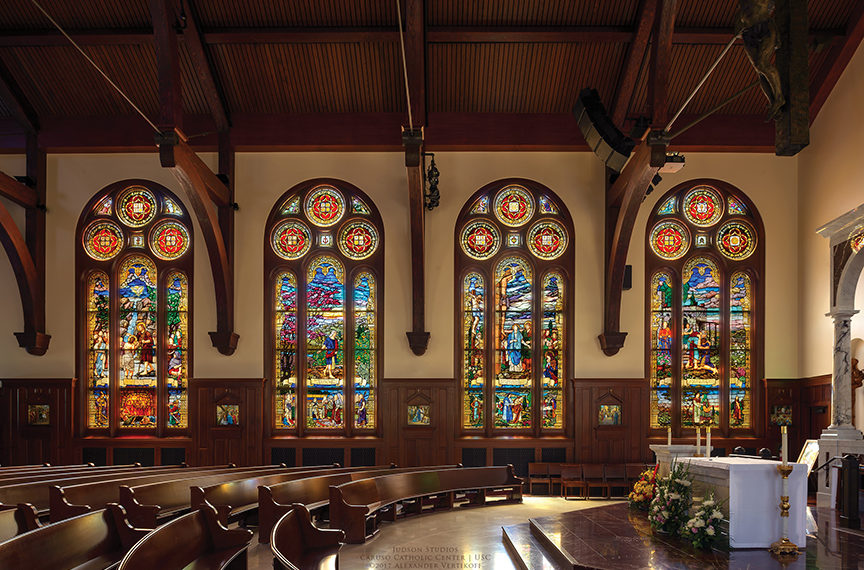
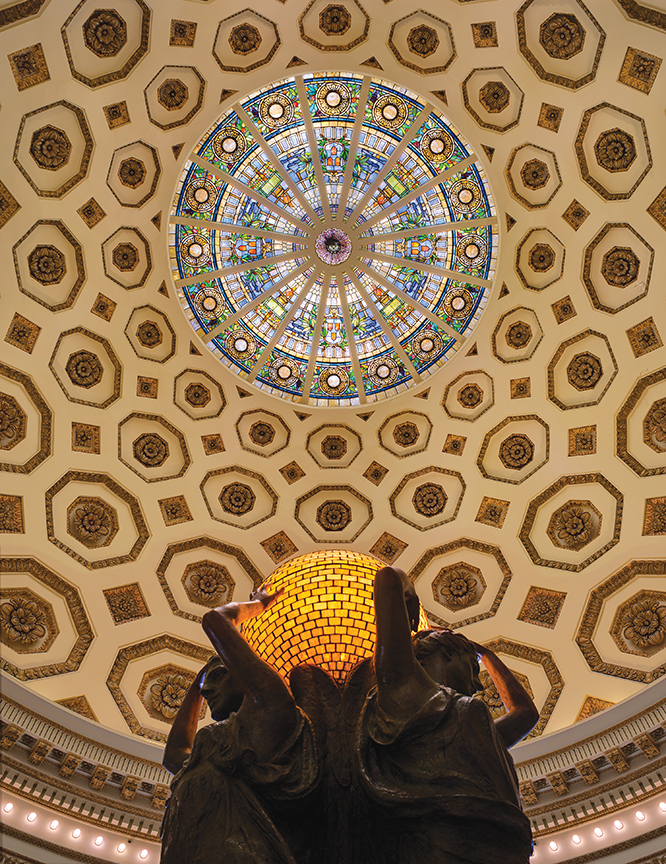
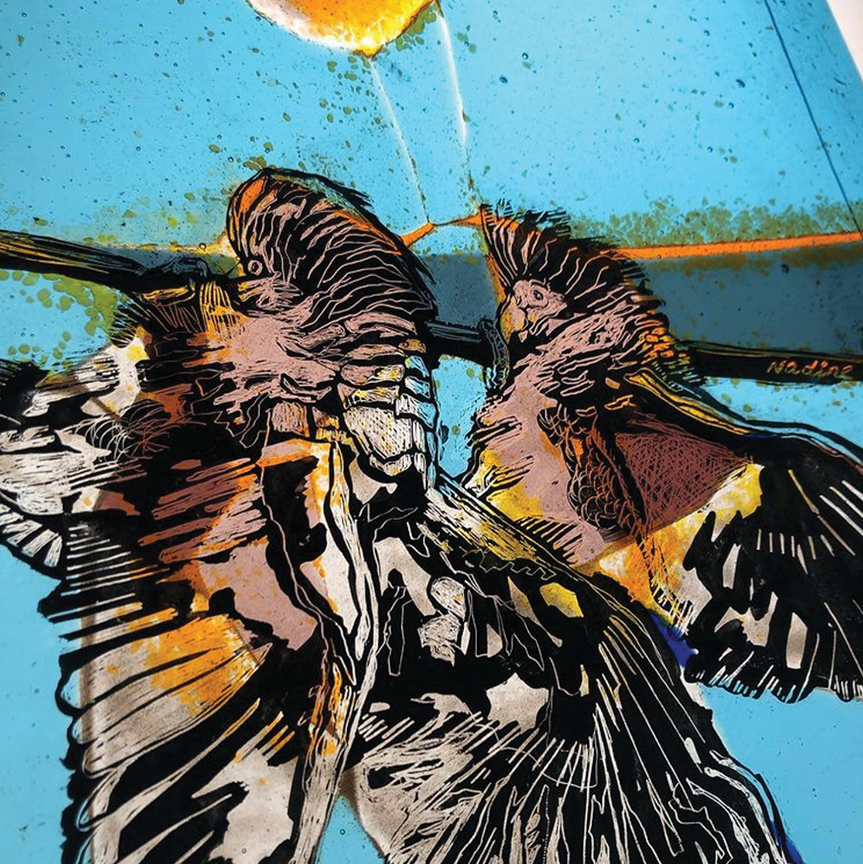
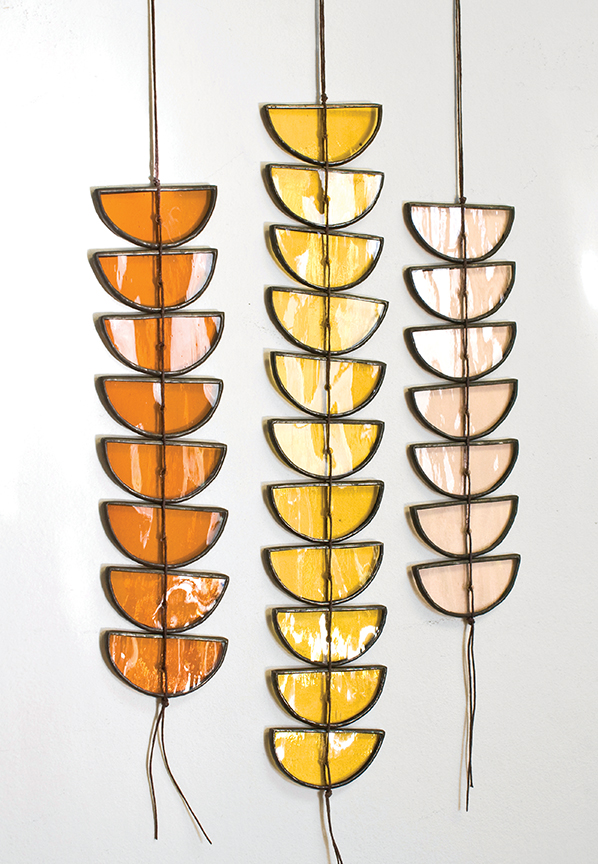
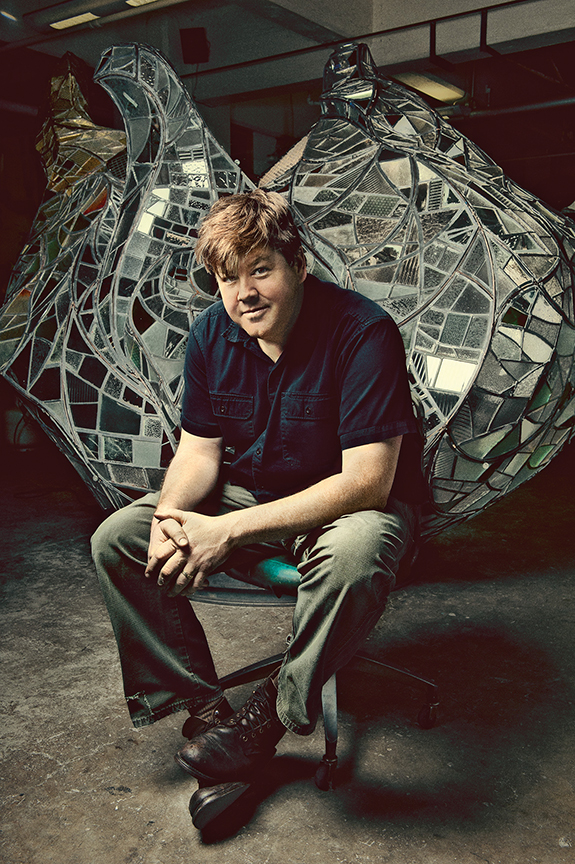
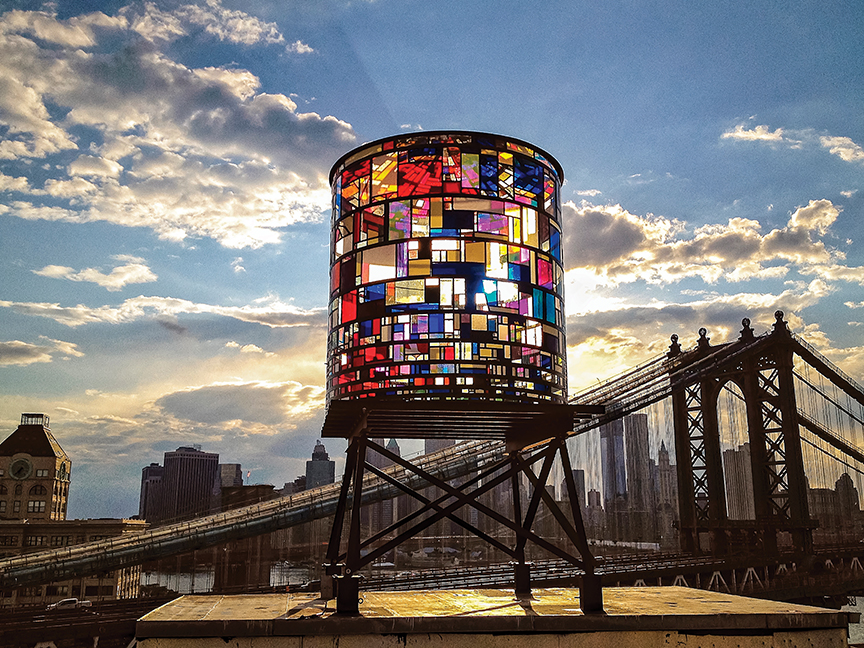
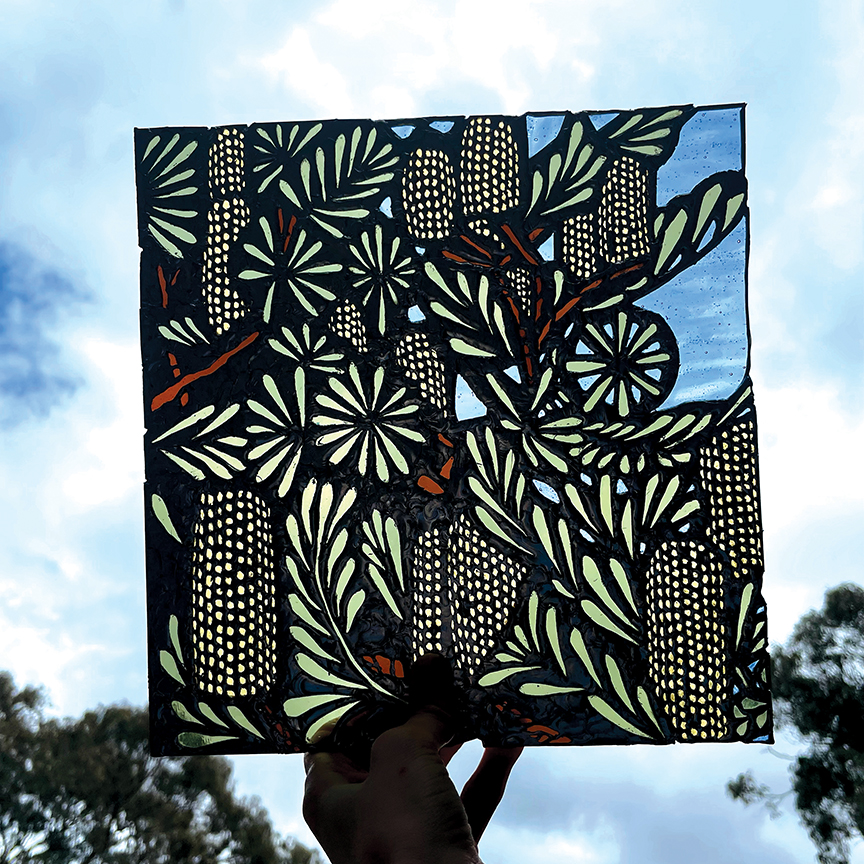
Leave a Reply